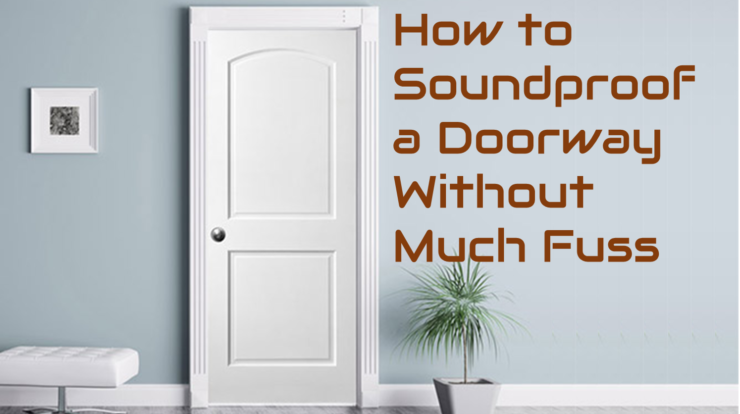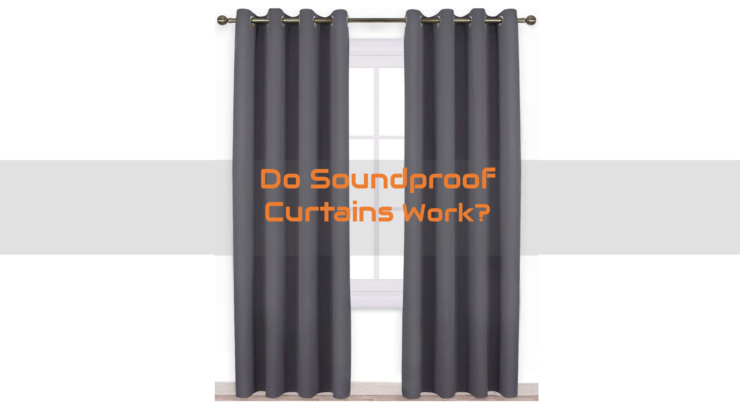I know why home builders place the above door vent in the home, but I am sure they were not thinking about the much-hated side effect of those bents – the trapped heat during summer and the stale air failing to escape the room.
The above-door air vent is a common sight in most older homes. Count your blessing if it is not in yours.
Air vents are typically found in the ceiling or above the door. It is there so warm stale air can rise to the top and escape through the vents.
An above-door air vent is sometimes used in kitchens, laundry rooms, and bathrooms to escape the buildup of humidity. In addition, they are used to encourage airflow, for warm stale air to leave the room and fresh air to enter.
However, these air vents cause different sounds spillover from neighboring rooms to spillover in the space where you need some quiet. Noise from the neighbors is sometimes noticeable.
Luckily, there are a few ways to soundproof an above-door air vent.
Ways to soundproof above-door air vents
Air vents can be concealed or not, depending on your preference. Above door vents are the type installed to come out of the wall.
Soundproofing those air vents above your door is essential because it can help you sleep better at night by keeping out outside noise.
When you’re trying to sleep or work in a room with an above-door vent, the sound of its constant whistling might be enough to throw off your day.
In addition, you can work in your home office without the kids disrupting your meeting.
I discovered several valuable solutions online that I thought would be useful.
Here are five of the most effective ways to block unwanted sounds entering your space through your above-door air vent: block the air vent with drywall; build a sound maze; hang soundproof curtains; use acoustic foam panels; or use soundproofing sealant.
Continue reading this article, where I will explain each separately. When solving this problem, there are two philosophies: you can block the vent entirely, use different strategies, or create a sound-maze to enjoy the fresh air still but without excessive sound pollution.
(1) Block air vent with drywall
From a soundproofing perspective, the best way to soundproof the above-door air vent is to remove the air vent, insulate the space with a foam sealant link to amazon and cover the hole over with drywall.
The drywall will make the space above the door look like the wall in the rest of the room.
There is a problem with this solution. Remember the reason for having the vents in the first place, airflow.
You will now have to find a way to allow hot air to escape during the hot summer days and for the cool air from your HVAC system to enter the space.
(2) Build a sound maze
Sound control is an integral part of any room. But what happens when the sound produced by your room’s equipment goes right through your above-door air vent?
Soundproofing your above-door air vent doesn’t have to be challenging or expensive – you can make a good sound-maze! A sound-maze is a fun project that lets you control the sounds in your home.
The best thing about this DIY project is that it only takes a few hours to complete.
If you’re looking for something more permanent, check out the previous method to block the air vent with drywall.
The good thing about the sound maze is that it allows passive airflow, unlike blocking the area above the door with drywall.
The sound maze is a small maze inside the vent made with acoustic foam taped to wood in a zig-zag fashion.
Sound travels in a straight line, and the zig-zag pattern of the maze forces the sound to criss-cross through, resulting in the deadening of the sound.
If you are going to build your sound maze, you will need the following materials:
1/4inch plywood
wood saw and wood glue
tape measure
screwdriver
screws
Remember that this method will not eliminate the sound but only reduce its intensity.
(3) Hang soundproof curtains
Hanging soundproof curtains can be a great way to keep the noise from your upstairs neighbor from entering your apartment.
Sound travels quickly and easily through vents, which means that even if you live on the first floor, you’re still vulnerable to noises made by those living on the upper floors.
There are many different kinds of soundproof curtains you can hang in order to block out the sound coming from air vents.
You may want to consider hanging them over windows or doors as well so they don’t just cover up any sounds that come into your home.
(4) Use acoustic foam panels
One of the most effective ways to soundproof your home is by buying acoustic foam panels (open in a new tab for the product on Amazon).
These panels have a very high absorption rate for noise, making it possible to eliminate unwanted noise without spending money on expensive insulation materials.
The best part about these panels is that they’re easy to install yourself. You need to cut them down to size and place them where needed.
If you’d rather not DIY, there are plenty of companies who will sell you pre-cut panels ready to be installed. If you want to use this method instead, you can buy the foam panel at amazon.
(5) Use soundproofing sealant
Many people find that soundproofing an air vent is daunting, but it doesn’t have to be. Many soundproofing sealants on the market will work well for the task.
One particular product that is readily available to homeowners is great stuff insulating Sealant. This sealant will create a tight seal around door thresholds and air vents in walls, ceilings, and floors.
It’s also easy to apply: spray or brush onto surfaces where needed. The best part about using this type of sealant? You don’t need any special tools!
Just use your regular paintbrush or roller to spread the sealant as you would with other paints. Once applied, let dry completely before moving furniture into the room.
Conclusion
In conclusion, I hope this article helped help you to understand the importance of soundproofing an air vent in your home. If you have any questions about soundproofing, don’t hesitate to get in touch with me at diyhomeguru.com.





